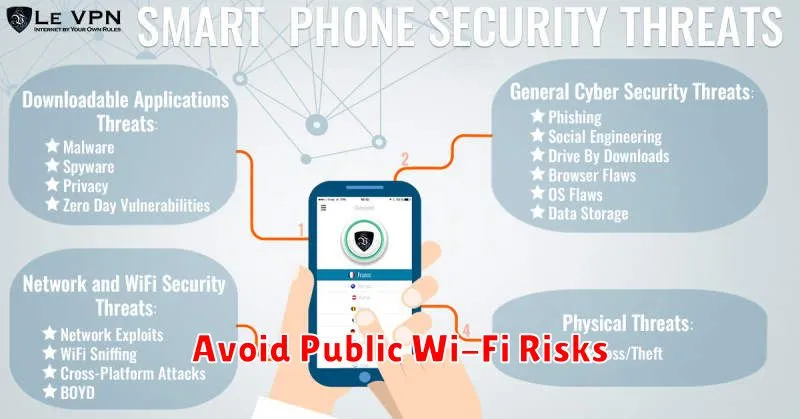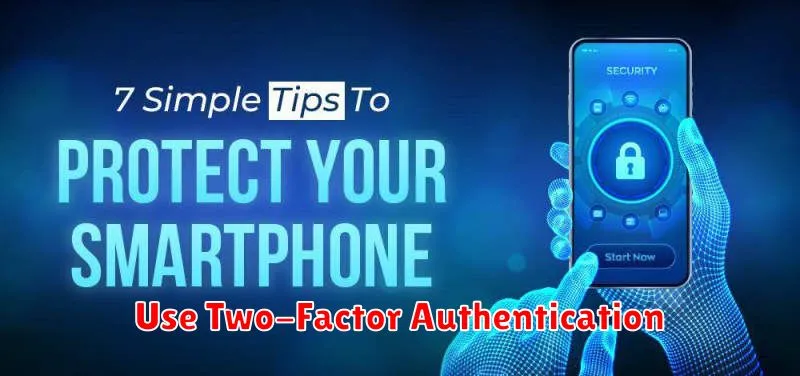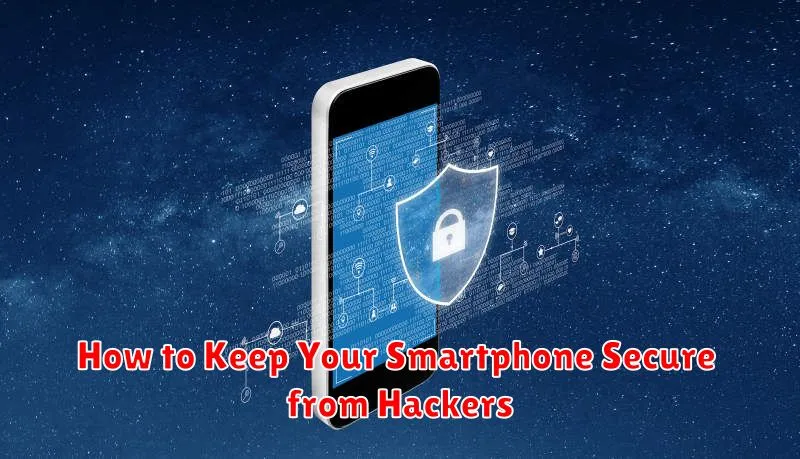In today’s interconnected world, smartphone security is paramount. Our devices hold a treasure trove of personal information, from banking details and private conversations to sensitive photos and location data. Protecting this information from hackers is crucial to safeguarding our privacy and preventing identity theft. This article provides essential tips and techniques on how to keep your smartphone secure, covering topics such as strong passwords, two-factor authentication, software updates, and recognizing phishing scams. Learn how to fortify your digital defenses and keep your valuable data out of the wrong hands.
Smartphone hacking is a growing threat, and it’s more important than ever to take proactive steps to secure your device. Whether you use an Android or iPhone, the risks are real. This guide will offer practical advice on how to strengthen your smartphone security against hackers. We’ll explore how to create strong passwords, enable two-factor authentication, manage app permissions, and identify potentially harmful apps. By implementing these strategies, you can significantly reduce your vulnerability to cyberattacks and maintain control over your personal information.
Enable Strong Passcodes and Biometrics
One of the most effective ways to secure your smartphone is by enabling a strong passcode. Avoid simple combinations like “1234” or your birthdate. Instead, opt for a longer, alphanumeric passcode that includes a mix of uppercase and lowercase letters, numbers, and symbols.
Most modern smartphones offer biometric authentication options like fingerprint scanning and facial recognition. These methods provide an extra layer of security and are generally more convenient than typing in a passcode every time you unlock your device. Enable these features if your device supports them. Be aware that biometrics, while convenient, can be less secure than a strong passcode in certain situations. Therefore, consider them a convenient supplement rather than a complete replacement.
Keep Your OS and Apps Updated
One of the most effective ways to protect your smartphone is by keeping your operating system (OS) and apps updated. Updates often include critical security patches that address known vulnerabilities. Hackers frequently exploit these vulnerabilities to gain unauthorized access to your device. By promptly installing updates, you significantly reduce your risk.
Enable automatic updates whenever possible. This ensures you receive the latest security enhancements without manual intervention. For apps, regularly check for updates through your device’s app store. Don’t delay installing these updates, as postponing them leaves your device susceptible to attacks.
Avoid Public Wi-Fi Risks

Public Wi-Fi hotspots are convenient, but they pose significant security risks. These networks often lack proper encryption, allowing hackers to intercept your data. Avoid accessing sensitive information like online banking or email while connected to public Wi-Fi.
If you must use public Wi-Fi, consider using a virtual private network (VPN). A VPN encrypts your connection, shielding your data from prying eyes. Be cautious of fake Wi-Fi hotspots. Hackers sometimes set up malicious networks with names similar to legitimate ones to steal your credentials.
Use Reliable Security Apps
Boosting your smartphone’s security posture involves leveraging reputable security applications. These apps offer an extra layer of protection against various threats.
Antivirus apps are crucial for detecting and removing malware. Select a well-known antivirus app from a trusted provider and ensure it’s regularly updated.
VPN apps create a secure, encrypted connection, shielding your online activities on public Wi-Fi networks. They help protect against eavesdropping and data theft.
Anti-theft apps offer features to locate, lock, or wipe your device remotely if it’s lost or stolen. They add an essential layer of security for your personal data.
Beware of Phishing Attempts
Phishing is a common tactic used by hackers to steal your personal information. It involves deceptive messages, often disguised as legitimate communications from banks, social media platforms, or online stores.
These messages attempt to trick you into revealing sensitive data, such as usernames, passwords, credit card numbers, and social security numbers. Never click on suspicious links or provide personal information in response to unsolicited emails or text messages. Always verify the sender’s identity before interacting with any communication that requests personal information.
Be wary of messages that create a sense of urgency or pressure you to act quickly. Scrutinize the message for grammatical errors, unusual formatting, or suspicious email addresses, which can be indicators of a phishing attempt. If something feels off, it probably is.
Limit App Permissions
Mobile applications often request access to various features and data on your smartphone. Granting unnecessary permissions can pose a security risk. Carefully review the permissions an app requests before installation and be mindful of what information you’re sharing.
Only grant permissions that are essential for the app’s core functionality. For example, a messaging app likely needs access to your contacts, but a calculator app shouldn’t require access to your location or camera.
Regularly review and revoke unnecessary permissions from apps you’ve already installed. Your phone’s settings menu will allow you to manage these permissions on an app-by-app basis.
Regularly Back Up Your Data
Creating regular backups is a critical step in mitigating the impact of a potential security breach. Should your device be compromised, a recent backup allows you to restore your data to a clean state, minimizing data loss from malware or ransomware attacks.
Frequency is key. Back up your data at least weekly, or even more frequently if you handle sensitive information. Consider enabling automatic backups to simplify the process and ensure consistency.
There are several backup methods available. Cloud services offer a convenient option for automatic backups. You can also back up to your computer. Regardless of your chosen method, verify your backups are working correctly and that you can successfully restore your data.
Encrypt Your Smartphone Data
Encryption is a critical security measure that scrambles your phone’s data, making it unreadable without a decryption key. This protects your information if your device is lost or stolen.
Most modern smartphones offer built-in encryption options, often enabled by default. To verify or enable encryption:
- Android: Typically found in the Security settings, look for options like “Encrypt phone” or “Disk encryption.”
- iOS: Data protection is generally enabled automatically with a passcode or biometric lock.
Enabling encryption may take some time, so ensure your phone is fully charged before proceeding.
Use Two-Factor Authentication

Two-factor authentication (2FA) adds an extra layer of security to your accounts. Enabling 2FA means that even if someone steals your password, they’ll still need a second factor to access your account. This second factor is typically a temporary code sent to your phone via text, a code from an authenticator app, or a biometric verification like a fingerprint.
This drastically reduces the risk of unauthorized access. Most major online services offer 2FA, and you should strongly consider enabling it for all important accounts, including email, social media, and financial institutions.
What to Do If Your Phone Gets Hacked
Discovering your phone has been compromised can be distressing. Take immediate action to mitigate the damage and regain control.
First, change all your passwords, including those for email, social media, and financial accounts. Enable two-factor authentication wherever possible for added security.
Next, scan your phone for malware using a reputable security app. Remove any suspicious apps immediately. Consider performing a factory reset as a last resort to wipe out any lingering threats. This will erase all data on your device, so back up important files beforehand if possible.
Finally, notify your contacts about the potential compromise and monitor your accounts for unusual activity. Contact your mobile carrier and financial institutions if necessary.

